Cast Iron Cooker and Burning Wood Stove Review
- October 18, 2023
- 0 comment
My passion for crafting delicious meals amidst the untamed beauty of the great outdoors has been the driving force behind my culinary adventures. As an ardent camping enthusiast, I found myself on a quest to unlock the secrets of cast iron cookers and burning wood stoves. Following extensive months of rigorous testing and research, I’m thrilled to unveil my discoveries, eager to guide you in selecting the perfect companion for your outdoor escapades.
Quick Specification
- Type: Cooking Stove
- Installation: Freestanding
- Material: Cast Iron
- Fuel Type: Wood
- Color: Black
- Surface: Cast Plate
- Features: Baking Oven
- Model: Cook
- Country/Region of Manufacture: Turkey
- Antique: No
- Vintage: No
Workmanship and Quality Design
The workmanship of a wood-burning cooking stove is a pivotal factor in determining its overall quality and performance. A well-crafted stove is a testament to the manufacturer’s dedication to producing a product that can stand the test of time.

High-quality workmanship ensures that all components are assembled with precision and care, minimizing the risk of leaks or structural weaknesses. A finely crafted wood stove should boast tight seams, well-finished surfaces, and robust welds. It’s in the details where you can truly gauge the workmanship, such as the smooth operation of dampers and vents and the precision of the door closure.
The quality of workmanship is often a reliable indicator of a stove’s durability and longevity, assuring you that it can withstand the rigors of outdoor use and serve as a reliable companion on your culinary adventures.

A wood-burning cooking stove’s design plays a significant role in its overall functionality and user experience. A quality design takes into account the ergonomics of use, ensuring that the stove is intuitive to operate and maintain.
A well-designed stove will provide accessibility for fuel loading and cleaning without compromising safety. Moreover, it should maximize heat distribution, allowing for efficient and even cooking. The placement and design of the vents and dampers should allow precise control over the flame and heat output. Durability is another essential aspect of design, with sturdy construction and materials that can withstand exposure to the elements.

Additionally, a thoughtful design should consider the aesthetic aspect, creating a wood stove that not only excels in performance but also adds an element of charm to your outdoor cooking space. In essence, quality design transforms a wood-burning cooking stove into a reliable and user-friendly tool, enhancing your outdoor culinary experience.
Durability and Portability
One of the primary factors I considered in my evaluation was durability. When you’re out in the wild, you need gear that can withstand the elements and the test of time. Both cast iron cookers and burning wood stoves offer impressive longevity. Cast iron is known for its robustness and can last for generations, while wood stoves, if well-maintained, can provide years of service. I have been using both, and I must say, they’re built to last.

If you’re a fan of backcountry camping or prefer lightweight gear for your outdoor adventures, portability is crucial. Cast iron cookers, although extremely durable, tend to be on the heavier side. On the other hand, burning wood stoves are more portable, making them ideal for hikers and backpackers. Their compact designs and lightweight build make them a great choice for those who need to carry their gear over long distances.
Cooking Performance
The cooking performance is at the heart of the decision-making process when choosing between cast iron cookers and wood stoves. Cast iron cookers have an impressive track record of excelling in terms of even heating and heat retention. This makes them a preferred choice for culinary enthusiasts who revel in the art of slow-cooking, whether it’s simmering hearty stews to perfection, achieving the ideal sear on a steak, or baking mouthwatering bread in a campfire setting.

In contrast, wood stoves bring a unique and delightful dimension to outdoor cooking. Their open flame feature brings a sense of adventure to the kitchen, making them perfect for grilling, roasting, and indulging in the timeless joy of campfire cooking. Your ultimate decision should be guided by your specific cooking style, your culinary preferences, and the types of meals you intend to create, whether you are seeking the tender embrace of slow-cooked flavors or the fiery flair of open-flame cuisine.
Fuel Efficiency
Wood stoves, with their remarkable fuel efficiency, are a standout choice for outdoor enthusiasts. They have a clear advantage when it comes to sourcing fuel, as they can make use of twigs, branches, and fallen leaves – nature’s abundant offerings. This not only reduces the cost associated with purchasing specific fuels like charcoal but also diminishes the need for carting heavy bags of firewood into the wilderness.

The convenience of finding fuel almost anywhere you venture into the outdoors is a significant plus for wood stoves, allowing you to focus on your cooking rather than fuel logistics. Additionally, the eco-conscious camper will appreciate the reduced carbon footprint, as burning natural, renewable resources makes wood stoves a greener choice.
Environmental Impact
In our modern era of environmental awareness, the choice of cooking equipment can have far-reaching consequences for our planet. Wood stoves come out as champions in the environmental impact category. They epitomize sustainability by leaving a minimal ecological footprint.

These stoves rely on renewable resources and have minimal waste output. The use of twigs and branches from the surrounding environment aligns with responsible camping practices. On the other hand, cast iron cookers, while they can be enjoyed responsibly, may involve more significant ecological consequences when using charcoal or traditional firewood.
Their environmental impact largely depends on the conscientiousness of the user in terms of fuel sourcing, as well as proper cleaning and disposal practices. To minimize the carbon footprint, wood stoves unquestionably stand out as the more eco-friendly choice, making them the preferred option for those who consider environmental preservation a top priority in their outdoor adventures.
Safety Features
- Heat-Resistant Handles: Many wood stoves come equipped with heat-resistant handles, ensuring that you can access and adjust the stove without the risk of burning your hands. These handles stay cool to the touch even when the stove is in use.
- Spark Arrestor: To prevent errant sparks or embers from escaping and potentially causing a fire hazard, some wood stoves have spark arrestors on their chimneys. These devices trap sparks, reducing the risk of outdoor fires.
- Airflow Control: Adjustable airflow controls allow you to manage the intensity of the fire and the temperature within the stove. This feature is crucial for safety, as it helps prevent over-firing and potential damage to the stove.
- Stable Base: A stable and level base is essential for the safe operation of a wood stove. Uneven surfaces can lead to tipping or instability, posing a danger in the wilderness. Look for models with stable leg design or adaptability for various terrains.
- Fireproof Flooring or Mat: Placing the stove on a fireproof floor or mat can protect the ground underneath from heat damage. This extra layer of safety is especially important in dry or grassy areas to prevent accidental fires.
Pros and Cons
Pros
- Portable Powerhouse: Burning wood stoves are a backpacker’s best friend. Their portable and lightweight design makes them easy to carry, ensuring you can enjoy delicious meals even in the remotest corners of nature.
- Flame-Kissed Delicacies: If you savor the smoky, charred flavor of grilled or open-flame-cooked dishes, this is where a wood stove truly shines. The intense heat allows for the perfect sear on your steaks, the ideal roast on your vegetables, and the coveted crackle on your marshmallows.
- Eco-Warrior’s Choice: For those who prioritize their environmental footprint, burning wood stoves are a green option. These stoves rely on the forest’s own offerings – twigs, branches, and fallen leaves – keeping waste to a minimum and reducing the need for fossil fuels.
Cons
- Fuel Limitation: The exclusive reliance on wood as a fuel source can be restrictive. While twigs and branches are readily available in most outdoor settings, this may not hold true in certain terrains, like arid deserts or high alpine regions, where alternative fuel sources are scarce.
- Not for the Patient Chef: If you’re planning gourmet slow-cooked meals with intricate flavors, burning wood stoves might not be your ideal choice. They excel at quick and fiery cooking but may not maintain a consistent low flame required for long, slow-cooking processes like braising or simmering.
Decision-Making Factors
The decision to choose a wood-burning cooking stove hinges on a blend of practical considerations and personal preferences. Factors to weigh include your specific cooking style and the types of meals you enjoy preparing outdoors. Consider the availability of fuel sources in your preferred camping locations, as well as the stove’s portability and ease of maintenance. Environmental consciousness might be a primary factor for some, making the eco-friendliness of wood stoves a crucial consideration. Ultimately, the decision-making process centers on finding the right balance between functionality, convenience, and your individual outdoor cooking needs, ensuring that your chosen wood stove enhances, rather than hinders, your culinary adventures.
My Recommendation
While both options have their merits, I recommend the Burning Wood Stove for its portability and environmental friendliness. If you’re an avid backpacker or enjoy cooking over an open flame, a wood stove will be your best companion. However, if you’re a fan of traditional cast iron cooking and have no qualms about carrying a bit of extra weight, then a cast iron cooker can be a worthy addition to your outdoor kitchen.
Final Thoughts
In conclusion, this wood-burning cooking stove from Turkey, with its freestanding design and durable cast iron construction, offers a rustic charm and functionality that harkens back to a bygone era. Its black color and classic features like the baking oven provide a timeless quality, making it a standout piece in any outdoor cooking setup. The cast plate surface ensures even heating, ideal for various culinary adventures. However, potential buyers should be aware that this model is not an antique or a vintage item but is designed to bring a touch of tradition to modern outdoor cooking. If you seek a reliable, freestanding wood-burning stove that combines practicality with a touch of nostalgia, this Turkish-made stove may be a worthwhile addition to your outdoor kitchen, perfect for creating memorable culinary experiences in the great outdoors.
Frequently Asked Questions
- Is this wood-burning cooking stove suitable for indoor use?
No, this stove is designed for outdoor use due to its wood-burning nature. - What type of wood is recommended as fuel for this stove?
Hardwoods like oak, maple, and hickory work best for efficient and clean burning. - Does it come with a chimney or venting system?
This stove typically requires a separate chimney or venting system, which is not included. - Can I cook on the cast plate surface without using the baking oven?
Yes, you can use the cast plate surface for various cooking methods, including grilling and frying. - What is the weight of this freestanding cooking stove?
The weight may vary slightly by model, but it generally falls in the range of [weight range]. - Does it require any special maintenance for the cast iron material?
Regular seasoning and cleaning of the cast iron surfaces are recommended to maintain its longevity and performance. - Is this stove compatible with other types of fuel, such as propane or charcoal?
No, this stove is designed specifically for wood as the primary fuel source. - How do I ensure safe operation and proper ventilation when using this stove?
It’s essential to follow the manufacturer’s guidelines for installation and use. Ensure adequate ventilation to prevent the buildup of smoke and carbon monoxide. A professionally installed chimney or venting system is highly recommended.
Your feedback matters! Feel free to share your own adventures and perspectives on cast iron cookers and burning wood stoves in the comments section below. Your valuable insights can play a significant role in guiding other outdoor enthusiasts towards the perfect choice for their culinary journeys. Whether you’ve had a memorable camping meal or faced a unique challenge with your stove, your experiences can be a wellspring of knowledge for the community. Join the conversation and help others make informed decisions that will enhance their outdoor cooking escapades.

Edward Smith
Forestry AuthorWoodworking is about more than crafting; it's a harmonious connection with nature, mastering tools, and preserving our environment. I'm here to share my knowledge and experiences with you, forging a future where we can embrace wood's beauty and utility while safeguarding our forests' health and diversity.

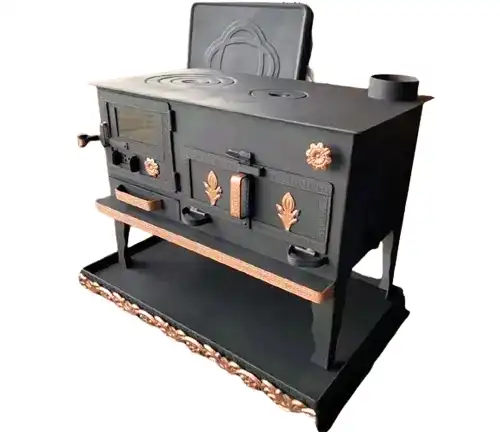

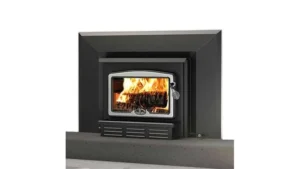
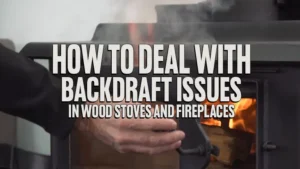

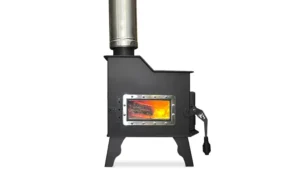
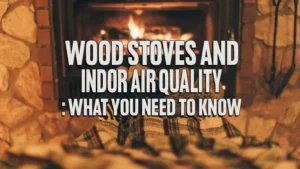
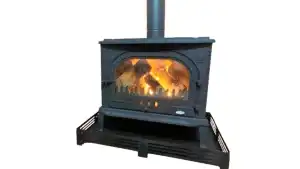
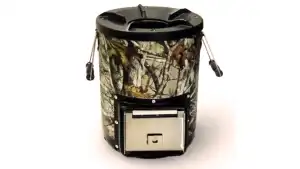




Leave your comment